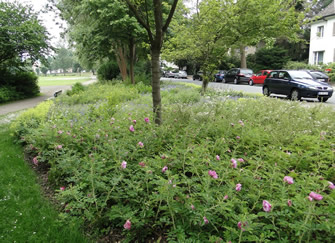1 Background
"Biological diversity" means the variability among living organisms from all sources including, inter alia, terrestrial, marine and other aquatic ecosystems and the ecological complexes of which they are part: this includes diversity within species, between species and of ecosystems. (UN 1992 Article 2) Land use has a significant effect on biodiversity. The more intense the use, the stronger the effect is on the natural conditions of the location. Cities are places of especially intensive land use that involves a greatly altered natural environment. Nevertheless, most cities have a surprisingly high diversity of biotopes and species. Urban green structures, like parks, gardens, city forests, agricultural and grassy fields, greenways along rivers and streets, and also small green spaces in residential areas and spontaneous vegetation such as on derelict sites have an important function for the preservation and support of biodiversity. They provide habitat and alternative habitat, cover, and stepping-stone biotopes for many plant and animal species. They also provide an array of important services for urban residents. For many, these are the places in which they can experience nature in their direct vicinity. Thus, cities carry a large responsibility for the preservation of and support for biodiversity, and with it, for the local implementation of the German National Strategy on Biological Diversity (NBS).
Particularly in heavily developed areas, the amount of available space for the preservation of green and open spaces is limited due to the competitive forces of differing goals of city development, such as built areas (land use conflict). Even if many cities have set approaches to support biodiversity, there is a lack of comprehensive strategies that take both the whole city as well as the inner city areas into account.
Our current level of understanding about urban biodiversity is not yet adequately reflected in practice. Deficits in the application and implementation of knowledge demonstrate a gap between research and practice.

